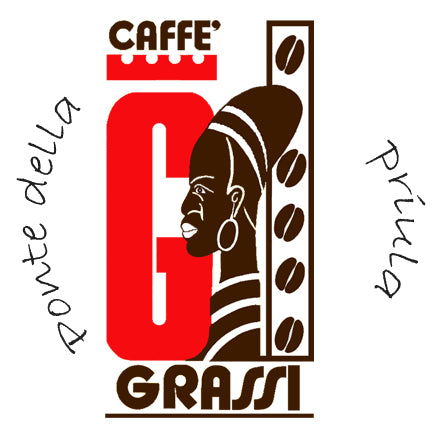
☕ How to recognize a good coffee
Share
1. The origin of the coffee makes the difference
Good coffee comes from beans grown in suitable areas, at specific altitudes, and with favorable climate conditions. The most prized origins include Ethiopia, Colombia, Brazil, Guatemala, and Kenya.
👉 At Torrefazione Grassi , we select the beans one by one with obsessive care , just as they used to do in the old days. We observe them, touch them, smell them , searching for pure aromas, invisible flaws, and hidden nuances. Every choice is the result of sensitivity, experience, and absolute dedication.
This method was passed down to us by founder Sante Grassi , who founded the company in 1961 with passion and perseverance. Since then, we have passed down the art of artisanal coffee as a family skill , refined over time with countless trials, tastings, and refinements.
Each of our blends is unique, the result of secret balances that we have jealously guarded for generations.

2. The appearance of the grains
The beans of a well-roasted coffee have:
-
a uniform color (neither too light nor too dark),
-
a dry surface, without excess oil,
-
a regular shape, a sign of careful selection and workmanship.
Avoid burnt, cracked, or shiny beans: these often indicate incorrect roasting or poor quality.


3. Perfume: the first real test
A quality coffee releases an intense and harmonious aroma , with notes ranging from chocolate and caramel, from flowers to dried fruit. Open the bag: if the aroma is barely present or it tastes burnt, it's probably not a good product.
4. Artisan roasting
Roasting is the art of transforming the green bean into a sensory experience. A slow, temperature-controlled roast enhances the coffee's natural aromas without masking them. This is what distinguishes industrial coffee from artisanal coffee.
At Torrefazione Grassi , we roast each single origin separately , precisely to respect the unique aromatic profile of each bean. Only then, with care and passed down intuition , do we balance our secret blends , the fruit of decades of perfection. The result? An authentic, complex, and persistent coffee.

5. Tasting in the cup
When you drink a good coffee, you must perceive:
-
Body : a full and enveloping consistency.
-
Aroma : floral, fruity, spicy or chocolate notes.
-
Balance : no flavor should prevail over the others.
-
Aftertaste : persistent, pleasant, without excessive bitterness.
A hallmark of excellent coffee is not feeling the need to drink water immediately afterward.
If, after drinking, a harmonious and pleasant flavor lingers in your mouth, one that isn't annoying but rather invites you to savor it for longer, then you're looking at a truly quality coffee.
The aftertaste, in this case, shouldn't be washed away: it should be appreciated. It's that aromatic trail that continues to tell you the story of the bean, even after the last sip.
6. The value of time: when coffee is truly fresh
Freshly roasted coffee is a concentration of aromas and essential oils that naturally begin to fade over time. It's in that ideal window of time , shortly after roasting, that it releases its full aromatic potential and most authentic flavor.
At Torrefazione Grassi , we respect coffee time:
We roast in small quantities , only when needed, to ensure that each bean is delivered at its best moment , without compromise.
This is the approach that sets us apart: we don't focus on long-term preservation, but on a lively, vibrant coffee , expressed at the peak of its intensity .
Because a good coffee can also be recognized by the fact that it needs no explanation : it speaks for itself as soon as you open it. It smells of care, passion, and true craftsmanship.

In conclusion
Recognizing a good coffee means listening to your senses: sight, smell, and taste. But it also means trusting the experience of those who, like us at Torrefazione Grassi , have poured passion, precision, and attention to detail into every single bean for over 60 years.
Discover our unique artisanal blends 👉 Visit our shop









